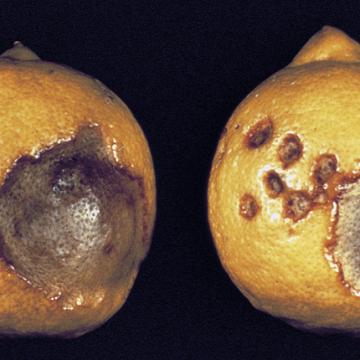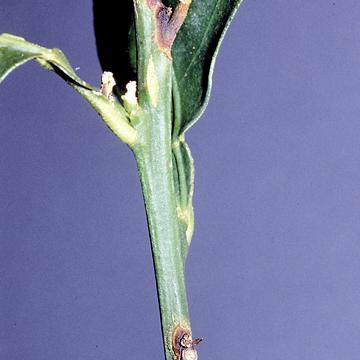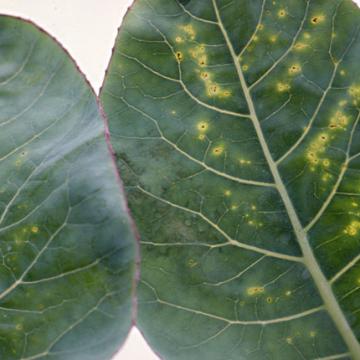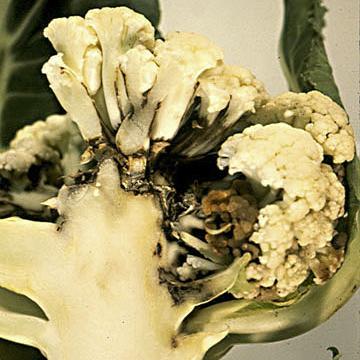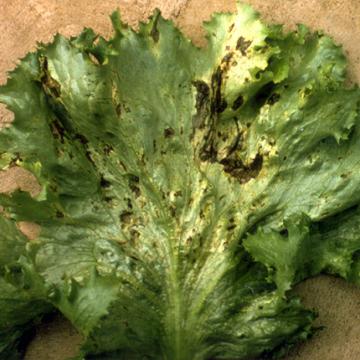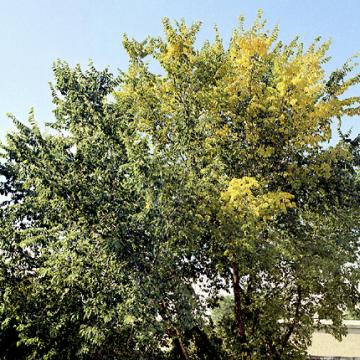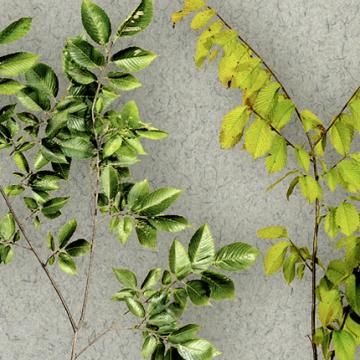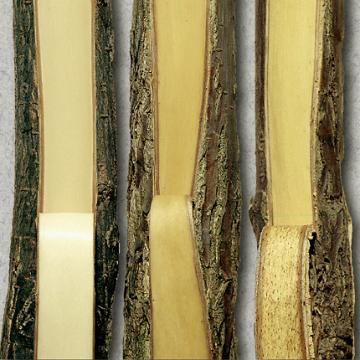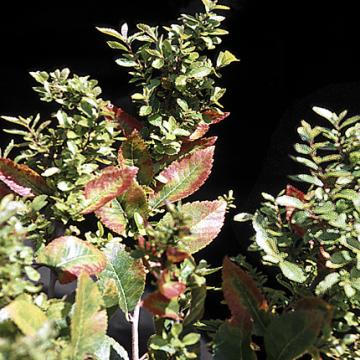DISEASE: Bacterial blast and black pit
HOST: Citrus (Lemon)
The term "black pit" refers to black lesions on fruit, which may be specks or large, sunken pits as seen here. They also may be light tan, later becoming reddish brown to black.
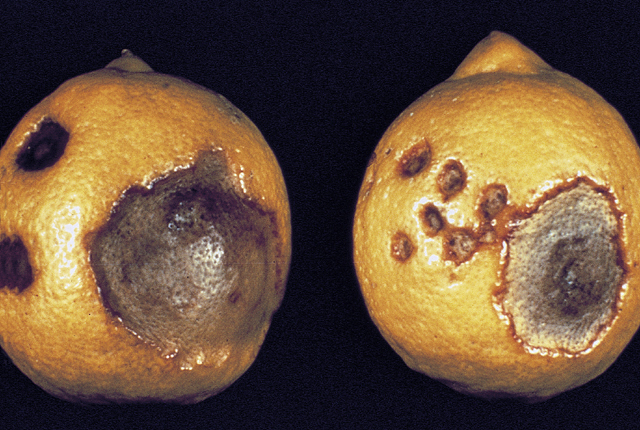
Bacterial blast and black pit | Citrus (Lemon)
DISEASE: Bacterial blast and black pit
HOST: Citrus (Lemon) (Citrus limon)
PATHOGEN: Pseudomonas syringae pv. syringae
SOURCE: J. Menge
DISEASE: Bacterial blast and black pit
HOST: Citrus (Lime)
Characteristic symptoms of brownish black lesions on twigs and leaves (blast), starting with infection of petioles. Black pit refers to brown to black sunken spots on fruit, 5 to 20 mm in diameter.
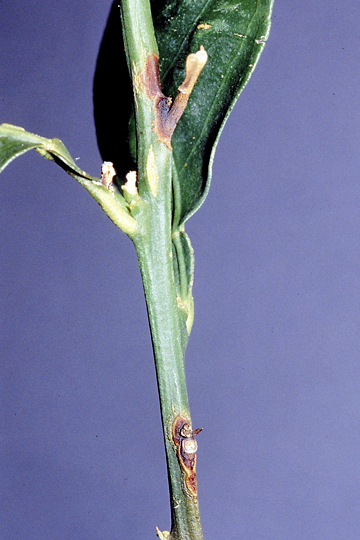
Bacterial blast and black pit | Citrus (Lime)
DISEASE: Bacterial blast and black pit
HOST: Citrus (Lime) (Citrus sp.)
PATHOGEN: Pseudomonas syringae pv. syringae
SOURCE: P. Broadbent
DISEASE: Bacterial leaf spot (Head rot)
HOST: Cauliflower
Leaves with tiny lesions surrounded by large halos.
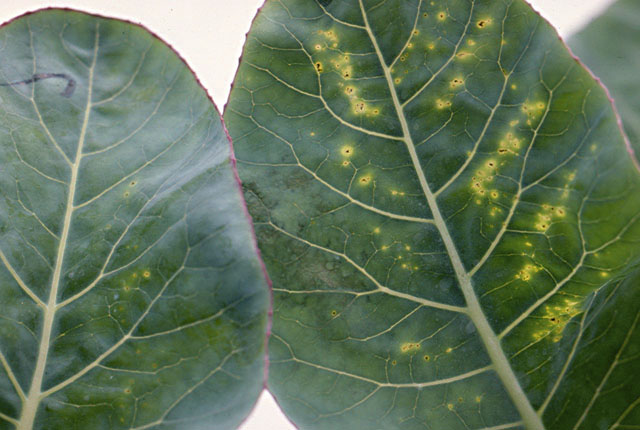
Bacterial leaf spot (Head rot) | Cauliflower
DISEASE: Bacterial leaf spot (Head rot)
HOST: Cauliflower (Brassica oleracea var. botrytis)
PATHOGEN: Pseudomonas syringae pv. maculicola
SOURCE: R. Campbell
DISEASE: Bacterial leaf spot (Head rot)
HOST: Cauliflower
Section of a cauliflower head with discolored, infected tissues.
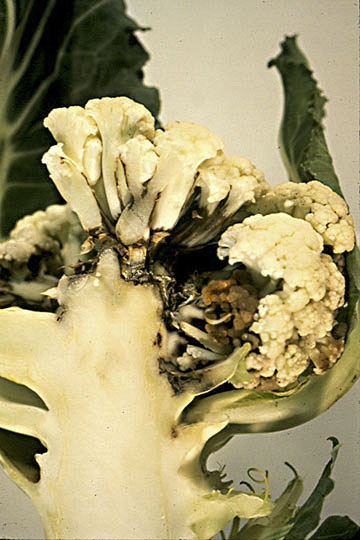
Bacterial leaf spot (Head rot) | Cauliflower
DISEASE: Bacterial leaf spot (Head rot)
HOST: Cauliflower (Brassica oleracea var. botrytis)
PATHOGEN: Pseudomonas syringae pv. maculicola
SOURCE: R. Campbell
DISEASE: Bacterial leaf spot (Head rot)
HOST: Lettuce
Leaf with black, greasy spots that tend to be vein delimited. Lesions begin as small, angular, water-soaked lesions that coalesce, resulting in large necrotic areas.
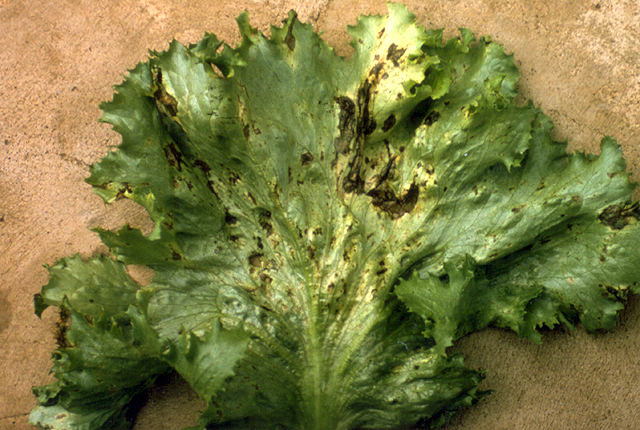
Bacterial leaf spot (Head rot) | Lettuce
DISEASE: Bacterial leaf spot (Head rot)
HOST: Lettuce (Lactuca sativa)
PATHOGEN: Xanthomonas axonopodis pv. vitians
PATHOGEN SYNONYM: Xanthomonas campestris pv. vitians
SOURCE: A. Alvarez
DISEASE: Elm yellows
HOST: Elm
Symptoms of elm yellows occasionally appear on one branch before others, but more often they involve the entire crown.
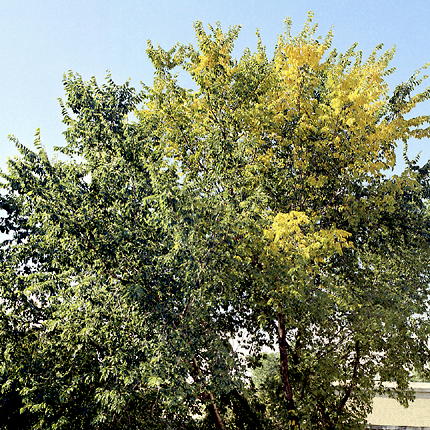
Elm yellows | Elm
DISEASE: Elm yellows
HOST: Elm (Ulmus americana)
PATHOGEN: 'Candidatus Phytoplasma ulmi'
PATHOGEN SYNONYM: Phytoplasma Elm yellows group
SOURCE: W. Sinclair
DISEASE: Elm yellows
HOST: Elm
Diseased twig (right) with epinasty, chlorosis, and yellowing of leaves. Sometimes both yellow and green leaves occur on same branch. Healthy branch (left).
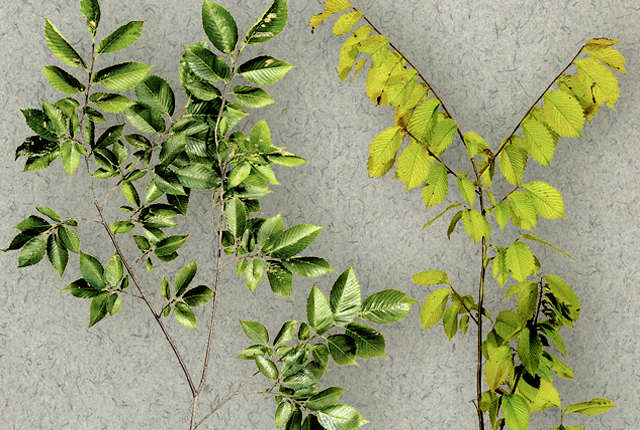
Elm yellows | Elm
DISEASE: Elm yellows
HOST: Elm (Ulmus americana)
PATHOGEN: 'Candidatus Phytoplasma ulmi'
PATHOGEN SYNONYM: Phytoplasma Elm yellows group
SOURCE: W. Sinclair
DISEASE: Elm yellows
HOST: Elm
Branches with butterscotch discoloration (center) and necrotic flecks in phloem and vascular cambium (right). Healthy branch (left). Sudden wilt and browning is common with small trees.
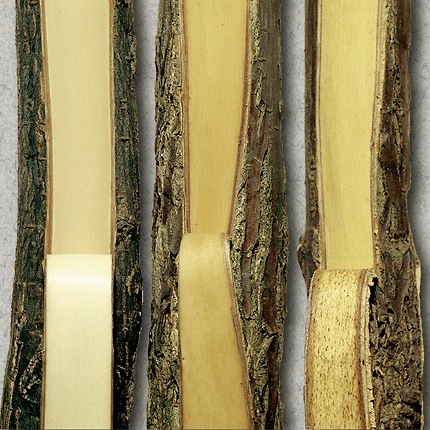
Elm yellows | Elm
DISEASE: Elm yellows
HOST: Elm (Ulmus americana)
PATHOGEN: 'Candidatus Phytoplasma ulmi'
PATHOGEN SYNONYM: Phytoplasma Elm yellows group
SOURCE: W. Sinclair
DISEASE: Elm yellows
HOST: Elm
Elm yellows is characterized by witches'-brooms and stunting. Some cultivars have both yellow and reddish foliar discoloration.
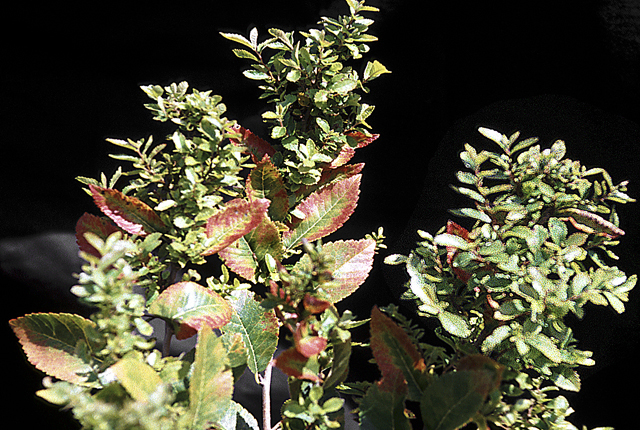
Elm yellows | Elm
DISEASE: Elm yellows
HOST: Elm (Ulmus parvifolia)
PATHOGEN: 'Candidatus Phytoplasma ulmi'
PATHOGEN SYNONYM: Phytoplasma Elm yellows group
SOURCE: W. Sinclair


